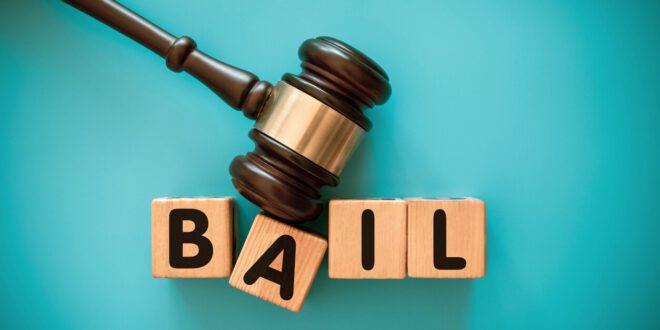Bail bonds serve as a financial agreement that allows for the temporary release of an individual charged with a crime, awaiting trial in Dayton, Ohio. When someone is arrested, a judge sets a bail amount that functions as collateral, ensuring the defendant’s appearance at future court dates. If the defendant cannot afford the bail amount, a bail bond, typically backed by a bail bond agency, can be posted instead. This system is designed to balance the public interest in preventing flight risk with the individual’s right to pretrial freedom.
Understanding how bail bonds operate in Dayton requires a grasp of both legal and procedural aspects. Once bail is set, a defendant or a representative may contact a bail bond agent. The bail bond agent then pledges to pay the full bail amount if the defendant fails to appear in court, usually charging the defendant a non-refundable fee, typically ten percent of the bail amount. This process involves a contractual agreement and may require additional collateral from the defendant or a co-signer to secure the bond.
Understanding Bail Bonds
Bail bonds are essential tools in the judicial process, offering a means for the accused to remain free while awaiting trial. In Dayton, Ohio, understanding the nuances of bail bonds is crucial for navigating the system effectively.
Definition and Purpose
A bail bond is a financial arrangement that a bail bonding agency will make on behalf of the defendant with the court. The purpose of the bond is to ensure that the defendant returns for their court appearances. In Dayton, a bail bondsman typically charges a fee, usually 10% of the bail amount, to provide this service. If the defendant does not show up in court, the bondsman is liable to pay the full bail amount to the court.
- Fee: Usually 10% of the bail amount
- Liable Party: Bondsman
- Condition: Defendant’s appearance in court
History of Bail Bonds in Ohio
The history of bail bonds in Ohio reflects a long-standing practice in the legal system. Originating in England, the concept was adopted in the United States and has been modified by individual states. In Ohio, laws regulating bail bond agents (also known as bail bondsmen) have evolved, with requirements for licensure and guidelines that govern their conduct.
- Origin: England
- Adaptation: United States
- State Modification: Individual state laws
- Ohio Regulations: Licensure requirements and conduct guidelines
The Bail Bond Process
The process of obtaining bail bonds Dayton Ohio, involves systematic steps post-arrest to secure a defendant’s release. This mechanism upholds the presumption of innocence until proven guilty.
Arrest and Booking Procedures
When a person is arrested in Dayton, they are taken into custody and undergo the booking process. Booking includes recording the individual’s personal information, the alleged crime, fingerprints, and a mugshot. Upon completion, detainees await their bail hearing.
Setting the Bail Amount
At the bail hearing, a judge determines the bail amount based on factors such as the severity of the offense, the defendant’s criminal history, and the risk of flight. Bail schedules are often used as a reference point to establish standardized amounts for common crimes.
Contacting a Bail Bondsman
If a defendant cannot afford the bail amount, they have the option to contact a bail bondsman. A bail bondsman or bail bond agent provides a surety bond that guarantees the court the defendant’s appearance at later proceedings.
- The defendant typically pays the bondsman a non-refundable premium which is usually 10% of the bail amount.
- In addition, a collateral might be required to secure the bond, which can be property, a car, or jewelry.
Roles and Responsibilities
In the bail bond process, each party involved has specific roles and responsibilities that are essential for the system to function properly in Dayton, Ohio.
Responsibilities of the Defendant
- Appearance in Court: The defendant is required to attend all scheduled court hearings. Failure to appear can result in bail forfeiture and additional criminal charges.
- Compliance with Conditions: They must adhere to any conditions set by the court, such as staying within jurisdiction or avoiding contact with certain individuals.
Duties of the Bail Bondsman
- Assessment of Risk: The bail bondsman evaluates the defendant’s background to assess the risk of issuing a bond.
- Ensuring Court Appearance: They are responsible for ensuring the defendant appears in court. They may use various measures, such as reminders or check-ins.
The Court’s Role
- Determination of Bail Amount: The court sets the bail amount based on factors like the severity of the crime and the defendant’s criminal history.
- Enforcement of Bail Agreement: It ensures that the bail agreement is adhered to and can take appropriate actions if the defendant or the bail bondsman fails to meet their obligations.
Types of Bail Bonds
In Dayton the bail bond system provides various options to secure release from jail while awaiting court proceedings. Understanding the distinctions between these options is crucial for defendants and their families.
Surety Bonds
Surety Bonds involve a bail bond agent or bondsman who agrees to be responsible for the full bail amount. The defendant typically pays the bondsman a non-refundable premium, usually 10% of the bail amount, to facilitate this service.
Cash Bonds
Cash Bonds require the full bail amount to be paid directly to the court. This can be in the form of cash, cashier’s check, or sometimes a credit card. The total amount is held until the conclusion of the court case and may be subject to return minus court fees.
Property Bonds
With Property Bonds, a defendant or a cosigner can secure the bail using real property value. The property must have an equity value at least equal to the bail amount, and the court holds a lien on the property as collateral.
Legal Considerations and Rights
In Dayton, Ohio, bail bonds are governed by state laws that take into account the rights of the defendant as well as the conditions for revocation and forfeiture of bail. Understanding these legal frameworks ensures the protection of individual rights while also maintaining the integrity of the judicial process.
Defendant’s Rights
Right to Bail: In most cases, the defendant has the right to bail, which is guaranteed under the Ohio Constitution, except in certain offenses like capital crimes. The bail amount is determined by the court and must be reasonable.
Right to Counsel: Defendants have the right to legal representation during bail hearings, ensuring their interests are advocated for and due process is maintained.
Legal Representation at Bail Hearings: It’s important to note that defendants are entitled to have their attorney present during these hearings to argue on their behalf.
Revocation and Forfeiture of Bail
Conditions of Bail: Bail may be revoked or forfeited if the defendant violates any conditions associated with it, such as no-contact orders, curfew, or failing to appear for scheduled court dates.
Forfeiture Process:
- Notice: The court provides written notice to the defendant and the surety (bails bond agent) if the bail is in jeopardy of forfeiture.
- Timeframe: After notice, they typically have up to 20 days to surrender the defendant to the court or to explain the absence.
- Consequences: Failure to comply results in a forfeiture of the bail bond amount to the court and potential issuance of an arrest warrant for the defendant.



































